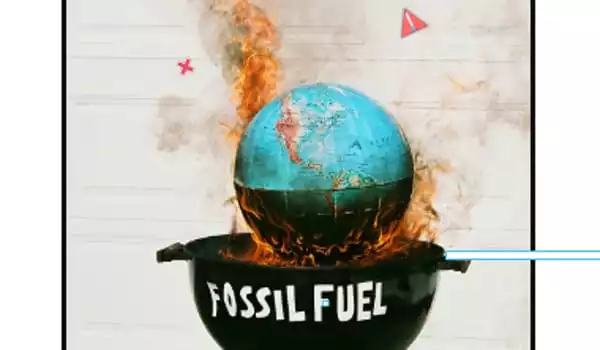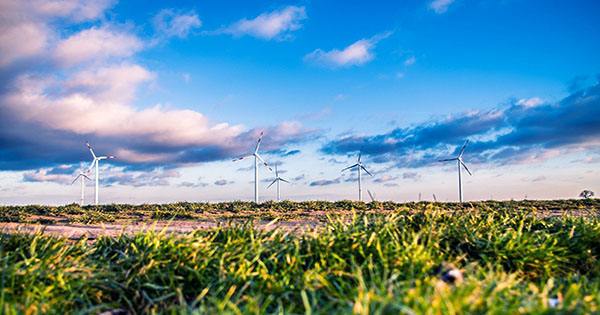When fossil fuels are burned, large amounts of carbon dioxide, a greenhouse gas, are released into the atmosphere. Greenhouse gases trap heat in our atmosphere, which contributes to global warming. Already, the average global temperature has risen by 1 degree Celsius. Warming above 1.5°C threatens additional sea-level rise, extreme weather, biodiversity loss, and species extinction, as well as food scarcity, worsening health, and poverty for millions of people around the world.
There are numerous methods for reducing greenhouse gas emissions from the industrial sector, including energy efficiency, fuel switching, combined heat and power, the use of renewable energy, and more efficient material use and recycling. Many industrial processes lack a low-emission alternative and will require carbon capture and storage to reduce emissions over time.
Consider a single policy imposed on a single industry that, if consistently enforced, would prevent fossil fuels from causing global warming within a generation. The Carbon Takeback Obligation has the potential to do just that. It requires fossil fuel extractors and importers to dispose of a growing fraction of the CO2 they produce in a safe and permanent manner, with that fraction increasing to 100 percent by the year of net-zero emissions. This would, crucially, include the carbon dioxide emitted by the products they sell.
Despite the perceived high cost of carbon dioxide capture and storage, we show that the cost to the world economy of a Carbon Takeback Obligation, even if entirely passed on to fossil fuel consumers, is no higher than the cost of mitigation in conventional scenarios meeting similar goals driven by a global carbon price.
Oxford researcher Stuart Jenkins
The number of countries pledging to achieve net-zero emissions in the coming decades is growing. However, even if fully implemented, the pledges made by governments to date fall far short of what is required to bring global energy-related carbon dioxide emissions to net-zero by 2050 and give the world an equal chance of limiting global temperature rise to 1.5 °C.
A groundbreaking study published in the international energy journal Joule by the Universities of Oxford and Edinburgh investigates the economic implications of imposing a carbon takeback obligation on the global fossil fuel industry, demonstrating that it provides an affordable and low-risk path to net-zero emissions, particularly when combined with conventional measures to reduce near-term fossil fuel demand.

‘Despite the perceived high cost of carbon dioxide capture and storage, we show that the cost to the world economy of a Carbon Takeback Obligation, even if entirely passed on to fossil fuel consumers, is no higher than the cost of mitigation in conventional scenarios meeting similar goals driven by a global carbon price,’ says Oxford researcher Stuart Jenkins, lead author of the study.
‘Investment in carbon dioxide capture and geological storage has, to date, been dependent on state subsidies, and consistently far below what is required to meet Paris climate goals,’ says report co-author Professor Stuart Haszeldine of the University of Edinburgh. Carbon Takeback gives the fossil fuel industry the strongest incentive to make amends: survival.’
‘Carbon Takeback has consistently been dismissed by the climate policy establishment as much more expensive and risky than the alternative of driving down consumption by changing consumer behavior or through a global carbon price,’ says another co-author, Oxford’s Professor Myles Allen. However, these options are not without risk. Getting to net-zero means raising carbon prices to $1000 per tonne of CO2 by 2050, which is 100 times the increase that sparked the gilets jaunes.’
‘A Carbon Takeback policy as proposed in this paper will provide a safety net to ensure we achieve net-zero emissions even if we don’t manage to reduce our use of fossil fuels quickly enough,’ says Margriet Kuijper, an independent expert in carbon capture and storage who reviewed the work. It increases producers’ responsibility to manage waste generated by the use of their products. The polluter is responsible for cleaning up. Furthermore, the costs are included in the product price. That’s how it should be.’
The majority of the global CO2 emissions reductions between now and 2030 in the net-zero pathway come from technologies that are readily available today. However, nearly half of the reductions in 2050 will come from technologies that are currently in the demonstration or prototype phase. This necessitates that governments rapidly increase and reprioritize their spending on R&D, as well as on demonstrating and deploying clean energy technologies, putting them at the center of energy and climate policy. Progress in advanced batteries, hydrogen electrolyzers, and direct air capture and storage can have a significant impact.
















